Ancient Chivalric Orders of Knighthood: A Closer Look at 12 Medieval Societies
The concept of the Chivalric Order, with its origins deeply rooted in the medieval period, offers a fascinating glimpse into the social and military fabric of historical societies. These orders were more than just bands of knights; they were institutions that embodied the highest ideals of chivalry, combining martial prowess with solemn vows to uphold religious, moral, and social codes. This exploration delves into 12 medieval societies, each representing a unique blend of knightly valor, devout faith, and commitment to service.
Order of the Garter

Sodacan, CC BY-SA 3.0 https://creativecommons.org/licenses/by-sa/3.0, via Wikimedia Commons
| Awarded by the Monarch of the United Kingdom | |
|---|---|
| Type | Dynastic order |
| Established | 1348 |
| Motto | Honi soit qui mal y pense (Anglo-Norman: ‘Shame on him who thinks evil of it’) |
| Criteria | at His Majesty’s pleasure |
| Status | Currently constituted |
| Founder | Edward III |
The Order of the Garter, founded in 1348 by King Edward III of England, is the oldest and most prestigious order of chivalry in the United Kingdom. Inspired by the ideals of Arthurian legend and the tales of the Knights of the Round Table, Edward III established the order to bind a circle of 25 knights, including the monarch and the Prince of Wales, in chivalry and honor under the patronage of St. George, the patron saint of soldiers.
The order was intended to solidify loyalty among England’s leading nobility during a period of military conflict and social upheaval, notably the Hundred Years’ War against France. The emblem of the order, a garter, has a mysterious origin, often linked to a legend involving the Countess of Salisbury’s garter falling off during a courtly dance, leading Edward to tie it around his leg with the proclamation “Honi soit qui mal y pense” (“Shame on him who thinks evil of it”), thus turning an embarrassing moment into a symbol of chivalry and fidelity.
Its most famous members have been historical figures such as Sir Winston Churchill, King Henry VIII, and, more recently, Queen Elizabeth II and Prince Charles. The order has boasted a roster of members that reads like a Who’s Who of British history, reflecting its status as a pinnacle of honor and national esteem.
The Order of the Garter remains active today, continuing its centuries-old traditions with annual ceremonies at Windsor Castle, including the Garter Day procession in which members don the regalia of the order, including velvet robes, insignia, and black velvet hats adorned with white plumes. One of the most intriguing aspects of the order is its strict limit of 24 companion members at any given time. This rule has only occasionally been relaxed to include monarchs and princes of foreign realms.
The longevity and prestige of the Order of the Garter exemplify the enduring appeal of medieval chivalric orders and ideals in the modern age, bridging centuries of British history through its continuous operation since the mid-14th century.
Order of the Golden Fleece
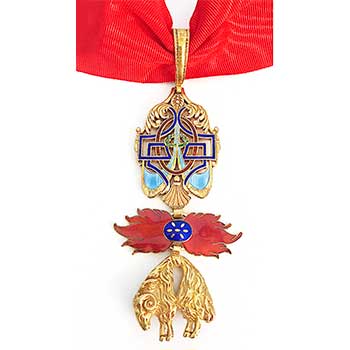
Presidentfranciscop, CC BY-SA 4.0 https://creativecommons.org/licenses/by-sa/4.0, via Wikimedia Commons
| Awarded by the King of Spain and the Head of the House of Habsburg-Lorraine | |
|---|---|
| Type | Dynastic order |
| Established | January 10, 1430 |
| Motto | Pretium Laborum Non Vile Non Aliud (Latin: The price of labor is not cheap – Not another) |
| Status | Currently constituted |
| Founder | Philip III, Duke of Burgundy |
The Order of the Golden Fleece was established in 1430 by Philip the Good, Duke of Burgundy, to celebrate his marriage to Princess Isabella of Portugal. Inspired by the myth of Jason and the Argonauts, the order was named after the legendary Golden Fleece, symbolizing wealth, authority, and the pursuit of excellence.
It was created to defend the Catholic faith and enhance the prestige of the Burgundian court, embodying the highest ideals of chivalry and nobility at the time. The order quickly rose to prominence, becoming one of the most esteemed and respected chivalric orders in Europe, known for its strict admission criteria and the illustrious status of its members.
Throughout its history, the Order of the Golden Fleece included some of the most significant figures of European nobility and royalty among its ranks. Notable members have included Emperor Charles V, King Philip II of Spain, and various other monarchs and high-ranking nobles who played pivotal roles in their times’ political and military affairs. The membership was an exclusive circle reserved for those of considerable influence and accomplishment, marking them as paragons of the values the order stood for.
The Order of the Golden Fleece remains active today, divided into two branches, the Spanish Fleece and the Austrian Fleece, following the split of the Habsburg dynasty in the 16th century. This division reflects Europe’s complex dynastic and political history but has allowed the order to continue its legacy into the modern era. An exciting facet of the order is its legendary insignia, a golden fleece pendant, which members wear to symbolize their commitment to the order’s ideals.
The order’s annual meetings and the ritualistic pomp surrounding its ceremonies continue to captivate the imagination, linking the present with the chivalric traditions of the medieval past.
Poor Fellow-Soldiers of Christ and of the Temple of Solomon (Knights Templar)
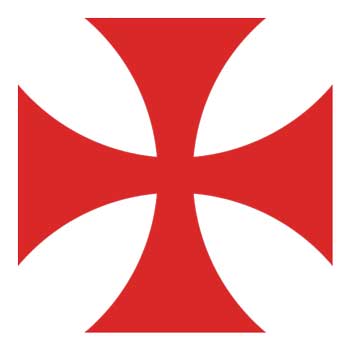
| A Holy Order led by a Grandmaster | |
|---|---|
| Type | Catholic Military Order |
| Established | 1119 |
| Motto | Non nobis Domine non nobis sed Nomini Tuo da gloriam (Latin: Not to us, O Lord, but to your name from ‘glory.) |
| Allegiance | The Pope |
| Headquarters | Temple Mount, Jerusalem Kingdom of Jerusalem |
The Knights Templar, officially known as The Poor Fellow-Soldiers of Christ and of the Temple of Solomon, was founded in 1119 by Hugues de Payens and eight other knights. With ecclesiastical endorsement from the Council of Troyes in 1129, the order was created to protect Christian pilgrims traveling to the Holy Land following the First Crusade.
The Templars were unique as they were among the first military orders combining the roles of monk and knight, taking vows of poverty, chastity, and obedience while engaging in fierce combat. Their headquarters was established on the Temple Mount in Jerusalem, from which the order derived its name, signifying their dual commitment to faith and martial prowess.
Though the individual names of most members have faded into obscurity, figures such as Richard the Lionheart were closely associated with the Templars, supporting their endeavors and benefiting from their military aid. The order’s Grand Masters, including Jacques de Molay, are among the most renowned, particularly in the context of the order’s dramatic dissolution. The Templars were instrumental in critical battles of the Crusades, notably the Battle of Montgisard in 1177, where they helped secure a significant Christian victory against the forces of Saladin.
The order was abruptly disbanded in 1312 by Pope Clement V under pressure from King Philip IV of France, who coveted the Templars’ wealth and was driven by his debts to them. Arrests, false charges of heresy and other crimes, and the burning at the stake of Jacques de Molay marked the Templars’ end. Despite their dissolution, the Knights Templar have endured in history and legend, often surrounded by myths of hidden treasures and connections to the Holy Grail.
Their legacy continues to fascinate historians and conspiracy theorists alike, contributing to the Templars’ enduring mystique as one of the most intriguing chivalric orders of the medieval world.
Order of Saint Michael

Jemike, CC BY-SA 3.0 https://creativecommons.org/licenses/by-sa/3.0, via Wikimedia Commons
| Awarded by the Monarch of France | |
|---|---|
| Type | Dynastic order |
| Established | August 1, 1469 |
| Motto | Immensi tremor oceani (Latin: ‘Immense tremor of the ocean) |
| Status | Abolished by decree of Louis XVI on 20 June 1790. Reestablished by Louis XVIII on 16 November 1816 Abolished in 1830 after the July Revolution Recognized as a dynastic order of chivalry by the ICOC |
| Founder | Louis XI of France |
The Order of Saint Michael, established in 1469 by King Louis XI of France, was created to rival the prestigious Burgundian Order of the Golden Fleece and consolidate loyalty among the French nobility. Named in honor of Saint Michael, the Archangel, the Christian symbol of military virtue and chivalry, the order’s founding purpose was to recognize and reward distinguished service and valor among the king’s subjects. It also aimed to foster a sense of unity and pride within the realm, serving as a spiritual and chivalric brotherhood under royal patronage.
Among the distinguished members of the Order of Saint Michael were some of the most notable figures of French and European nobility, including Francis I, Henry IV, and the warrior-king Louis XIV. These members, recognized for their bravery, leadership, and service to France, underscored the order’s importance as a symbol of the highest ideals of knighthood and loyalty to the crown.
Although the chivalric Order of Saint Michael was highly regarded in its early years, its significance waned over the centuries, particularly after the establishment of the Order of the Holy Spirit in 1578 by Henry III, which overshadowed it in prestige. By the early 19th century, the Order of Saint Michael had largely fallen into disuse. The order was eventually merged with the Order of the Holy Spirit during the reign of Louis XVIII.
Despite its eventual decline, the Order of Saint Michael remains a fascinating chapter in the history of French chivalry, remembered for its illustrious members and its role in the chivalric culture of the French court. One intriguing aspect of the order was its insignia, featuring the image of the archangel Michael overcoming the dragon, a powerful symbol of good triumphing over evil that captured the chivalric spirit the order sought to embody.
Order of Saint Michael of the Wing

Vonfeige, CC BY-SA 4.0 https://creativecommons.org/licenses/by-sa/4.0, via Wikimedia Commons
| Awarded by the head of the House of Braganza | |
|---|---|
| Type | Dynastic order |
| Established | 1171 |
| Motto | Quis ut Deus (Latin: Who to god) |
| Royal House | House of Braganza |
| Status | Currently constituted |
| Founder | King Afonso I of Portugal |
The Order of Saint Michael of the Wing is a lesser-known but historically significant chivalric order with its roots in Portugal. It was established in 1147 by King Afonso I of Portugal, also known as Afonso Henriques. The order was founded following a miraculous intervention attributed to Archangel Michael, who was said to have appeared during the Battle of Santarém, a pivotal moment in the Portuguese Reconquista. The celestial appearance is believed to have bolstered the morale of the Portuguese forces, leading to their victory against the Moors.
In gratitude, King Afonso I established the order to honor Saint Michael and commemorate the divine assistance in securing Portugal’s independence. The order was initially intended to recognize valor and service in battle, particularly in the campaigns to expand and defend the Christian faith against Moorish adversaries.
While the Order of Saint Michael of the Wing counted among its members several notable figures of Portuguese nobility and distinguished knights who played crucial roles in the country’s history, its prominence has fluctuated over the centuries. The order was revitalized in the 19th century by King Miguel I, who sought to restore its ancient traditions and prestige. However, after the liberal wars and the subsequent exile of Miguel I, the order’s activities were largely suspended.
Today, the Order of Saint Michael of the Wing exists primarily as a dynastic order under the House of Braganza, with its activities focused on cultural and charitable works rather than military endeavors. Though not as active or widely recognized as some of Europe’s other chivalric orders, it remains a symbol of Portugal’s rich historical tapestry and its enduring legacy of valor, faith, and loyalty to the crown.
An interesting fact about the order is its unique insignia, which features the image of Saint Michael in his triumphant battle against the dragon, a symbol not only of the order’s foundational legend but also of the ongoing struggle between good and evil, reflecting the chivalric values at the heart of the order’s ethos.
Order of the Dragon
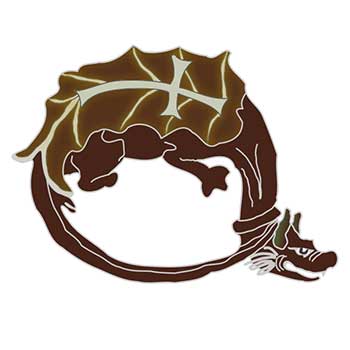
NoPunIn10Did, CC BY-SA 3.0 https://creativecommons.org/licenses/by-sa/3.0, via Wikimedia Commons
| Awarded by the the Holy Roman Empire | |
|---|---|
| Type | Monarchical Chivalric Order |
| Established | 1408 |
| Patron | Emperor Sigismund and Empress Barbara |
The Order of the Dragon was a monarchical chivalric order founded in 1408 by Sigismund of Luxembourg, who was then King of Hungary and later became Holy Roman Emperor. The order was established following Sigismund’s coronation as King of Hungary to gain support for his defense against the Ottoman Turks and to uphold the Christian faith against external threats.The Order of the Dragon drew its inspiration from earlier knightly orders. It was named for its emblem, a dragon curled around a red cross, symbolizing the fierce determination of its members to protect Christianity and fight its enemies.
Among the most notable members of the Order of the Dragon was Vlad II Dracul, Vlad III’s father, Vlad the Impaler, or Vlad Dracula, whose association with the order contributed to the legendary tales surrounding his name. Other distinguished members included rulers and high-ranking nobles from various European countries, united in their commitment to defend the Christian lands against the advancing Ottoman Empire. The order was a crucial rallying point for Christian knights and nobles during significant European military and religious conflicts.
The Order of the Dragon gradually declined in prominence and influence after Sigismund’s death and Europe’s changing political and religious landscape. It was never formally dissolved but faded into obscurity by the late 15th century. Despite its relatively short activity, the order remains a subject of fascination, partly due to its association with the Dracula legend and its emblematic dragon symbol, which continues to capture the imagination as a representation of the medieval chivalric ideal of bravery in the face of formidable adversaries.
The legacy of the Order of the Dragon is a testament to the complex interplay of history, legend, and the enduring allure of the chivalric orders of the Middle Ages.
Order of Knights of the Hospital of Saint John of Jerusalem

Sodacan, CC BY-SA 3.0 https://creativecommons.org/licenses/by-sa/3.0, via Wikimedia Commons
| A Holy Order led by a Grandmaster | |
|---|---|
| Type | Catholic Military Order |
| Established | 1099 |
| Motto | Pro Fide Pro Utilitate Hominum (Latin: ‘For Faith and for Service to Humankind’) |
| Allegiance | The Pope |
| Headquarters | Jerusalem Rhodes Birgu Valletta |
The Order of Knights of the Hospital of Saint John of Jerusalem, also known as the Knights Hospitaller, originated in the early 11th century, emerging from a hospice founded in Jerusalem to care for sick, poor, or injured pilgrims visiting the Holy Land. This charitable institution, dedicated to John the Baptist, laid the groundwork for a militarized monastic order following the First Crusade.
The transformation was driven by the need to protect pilgrims amidst the volatile environment of the newly established Christian states in the Levant. Officially recognized as a military order by the Papal Bull of 1113 issued by Pope Paschal II, the Knights Hospitaller became a crucial player in defending the Christian territories in the Eastern Mediterranean.
Among its most illustrious members was Jean de la Valette, the 49th Grand Master. He was celebrated for his leadership during the Great Siege of Malta in 1565, where the Knights withstood the Ottoman Empire’s might. This event is a testament to the order’s resilience and strategic military prowess. Other notable members include a succession of European nobles who led the order through centuries of change, adapting to shifting political and religious landscapes.
Remarkably, the Order of Knights of the Hospital of Saint John of Jerusalem, known as the Sovereign Military Order of Malta, is still active today. It is a sovereign international law entity dedicated to humanitarian and medical relief work worldwide. The order’s continuous operation since its founding over 900 years ago makes it one of the oldest chivalric orders.
An exciting aspect of the order’s history is its resilience and ability to adapt; after losing its last territorial stronghold of Malta to Napoleon in 1798, the order shifted focus to its hospitaller roots, emphasizing charitable works over military endeavors, a testament to its enduring legacy and adaptability.
Most Ancient and Most Noble Order of the Thistle
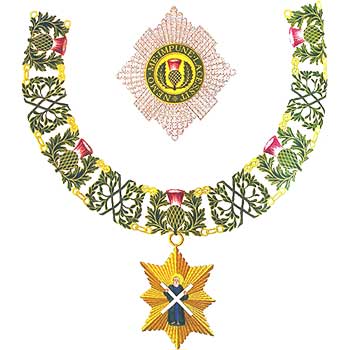
| Awarded by the Monarch of the Scotland (United Kingdom) and successor states | |
|---|---|
| Type | Chivalric Order |
| Established | 1687 |
| Motto | Nemo me impune lacessit (Latin: No one provokes me with impunity) |
| Criteria | at His Majesty’s pleasure |
| Status | Currently constituted |
| Founder | James VII |
The Order of the Thistle represents Scotland’s highest honor, embodying the nation’s rich heritage and chivalric traditions. Though its exact origins are shrouded in the mists of time, with some accounts tracing its roots back to the reign of Achaius in the 8th century, the modern Order was formally established by King James VII of Scotland (James II of England) in 1687. Its founding aimed to reward Scottish nobles for their loyalty and valor and to consolidate the king’s support amidst the political and religious turmoil of the time. The Order celebrates Scottish identity, valor, and the nation’s chivalric ideals, with its members committed to upholding the principles of honor and service to the Crown and country.
Its distinguished members have been various Scottish monarchs, British sovereigns, and prominent figures in Scottish and British public life, demonstrating the Order’s esteemed status within the United Kingdom’s honors system. Queen Elizabeth II, Sovereign of the Order, and Prince Philip, Duke of Edinburgh, were notable members, symbolizing the Order’s continued relevance and prestige.
The Order of the Thistle remains active today, with its membership limited to the monarch, 16 knights and ladies, and various extra knights (royal family members and foreign monarchs). The annual service held at St Giles’ Cathedral in Edinburgh is a significant event, showcasing the Order’s enduring traditions and the distinctive green and gold robes and insignia adorned by its members.
An exciting facet of the Order is the legend of its revival by James VII, inspired by the ancient story of a Norse invasion thwarted by the thistle, Scotland’s national flower, leading to the Order’s motto: “Nemo me impune lacessit” (“No one provokes me with impunity”). This tale encapsulates the spirit of resilience and pride that the Order of the Thistle continues to represent for Scotland.
Order of Saint Lazarus of Jerusalem
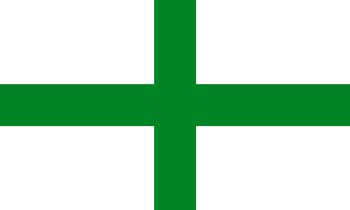
Masur, Public domain, via Wikimedia Commons
| A Holy Order led by a Grandmaster | |
|---|---|
| Type | Military Order |
| Established | 1119 |
| Motto | Atavis et Armis (Latin: Ancestors and Arms) |
| Founder | Crusaders in Jerusalem in 1119 |
The Order of Saint Lazarus is unique among medieval chivalric orders for its initial establishment as a hospitaller organization before transitioning into a military and chivalric order. Founded in the 12th century, around the time of the Crusades, the Order of Saint Lazarus dedicated itself to the care of lepers, its members serving in leprosariums across the Holy Land and later throughout Europe. Its origins are somewhat obscure, but the Latin Patriarch of Jerusalem has sanctioned it to combine the care of those afflicted by leprosy with the defense of the Christian faith.
Though the Order of Saint Lazarus does not boast a roster of members as widely known as some other orders, its significance lies in the charitable and spiritual mission it undertook, setting it apart in the annals of knighthood. Its members, often knights afflicted with leprosy, showed remarkable dedication to their cause, embodying the Christian virtues of compassion and sacrifice.
Today, the Order of Saint Lazarus continues to operate, albeit in a different form from its medieval origins. It has evolved into a charitable organization focusing on humanitarian aid and medical assistance, particularly in the fight against leprosy and other diseases. The order maintains its historical ties to chivalric tradition through ceremonies and the investiture of new members, upholding the legacy of its founding ideals.
An exciting aspect of the order is its survival and adaptation over the centuries, transitioning from a medieval military order into a modern charitable organization. This speaks to the enduring relevance of its foundational mission of service and care.
Order of Saint George

| The first secular chivalric order in the world established by King Charles I of Hungary | |
|---|---|
| Type | Chivalric Order |
| Established | 1326 |
| Motto | In Veritate iustus sum huic fraternali societae (Latin: In truth I am just to this fraternal society.) |
| Status | Defunct |
| Founder | Charles I of Hungary |
In the annals of chivalric orders within the Kingdom of Hungary, the Order of Saint George stands out for its historical significance and its distinguished role in the medieval era. Established in 1326 by King Charles I of Hungary, the Order of Saint George was the first of its kind in the realm, aimed at uniting the kingdom’s nobility under a common cause: the defense of the Christian faith and the protection of the realm.
King Charles, seeking to consolidate his power and inspire unity among his knights and nobles, chose Saint George as the patron of this order, drawing on the saint’s symbolism as a dragon slayer and protector of the innocent to embody the order’s foundational virtues of bravery, chivalry, and faith.
Though the order’s membership roster included some of the era’s most valorous and noble figures, detailed records of individual members and their deeds have been obscured by the mists of time. Nonetheless, the Order of Saint George’s members were pivotal in several military campaigns and efforts to strengthen the Christian holdings in Hungary and beyond, contributing to the kingdom’s legacy of medieval knighthood and military prowess.
The active period of the Order of Saint George was relatively brief, with its influence diminishing towards the end of the 14th century. Despite this, the order’s legacy continued to inspire subsequent generations, embodying the ideals of chivalry and faith central to the medieval knightly ethos. An exciting facet of the Order of Saint George is its reputedly pioneering nature within Europe, predating even the more widely recognized orders, such as the Order of the Garter in England. Though it no longer operates, the Order of Saint George remains a significant chapter in the history of Hungarian knighthood, illustrating the early efforts to organize chivalric brotherhoods around shared spiritual and military objectives.
Order of Brothers of the German House of Saint Mary in Jerusalem (Teutonic Order)
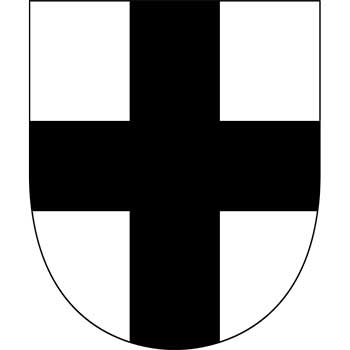
Ipankonin, CC BY-SA 3.0 http://creativecommons.org/licenses/by-sa/3.0/, via Wikimedia Commons
The Teutonic Order, formally known as the Order of Brothers of the German House of Saint Mary in Jerusalem, was founded in the late 12th century during the Third Crusade. It originated as a hospital brotherhood to aid Christians on their pilgrimage to the Holy Land. The transition from a charitable institution to a military order was sanctioned by the Holy Roman Emperor Henry VI and Pope Celestine III, transforming it into a knighthood that combined martial prowess with monastic discipline to defend the Christian world and expand its territories, notably in the pagan regions of Eastern Europe.
The order’s most prominent period was in the 13th and 14th centuries, when it undertook the Christianization of the Baltic region, engaging in numerous military campaigns against the pagan Prussians, Lithuanians, and other Baltic tribes. The Battle of Grunwald in 1410, where the combined Polish-Lithuanian forces decisively defeated the Teutonic Knights, is one of the most significant and famous confrontations involving the order, marking the beginning of its decline in power.
Famous members of the chivalric order have included Grand Masters like Hermann von Salza, under whose leadership the order gained imperial immediacy, and Albert of Brandenburg, who secularized the order’s Prussian territories to create the Duchy of Prussia.
Today, the Teutonic Order has evolved from its military origins to become a primarily religious and charitable institution, with its members taking vows of poverty, chastity, and obedience. The order ceased its military functions following its defeat and territorial losses but has continued to exist, focusing on its original hospitaller roots and Christian mission.
A notable aspect of the order is its significant role in the colonization and Germanization of Eastern Europe, which has left a lasting cultural and religious legacy in the region. The order’s complex history, from its militaristic conquests and crusades to its current status as a clerical order, underscores the dynamic evolution of medieval chivalric societies into modern times.
The Lasting Legacy of the Chivalric Order
Exploring these 12 ancient chivalric orders unveils a remarkable history, valor, and devotion that has shaped the course of civilizations. From the deserts of the Holy Land to the forests of Northern Europe, each order embodies the pinnacle of medieval knighthood, bound by solemn vows to uphold justice, protect the innocent, and preserve the faith.
While some orders have faded into the annals of history, their legacies endure, echoing the ideals of chivalry and brotherhood that transcend time. Others continue to thrive, adapting to the modern world while retaining the core principles that defined their inception.
Together, they offer a window into a bygone era, where the clang of swords and the vows of knights shaped the destiny of nations. Through their stories, the spirit of the chivalric order lives on, a testament to the enduring allure of honor, courage, and service beyond oneself.



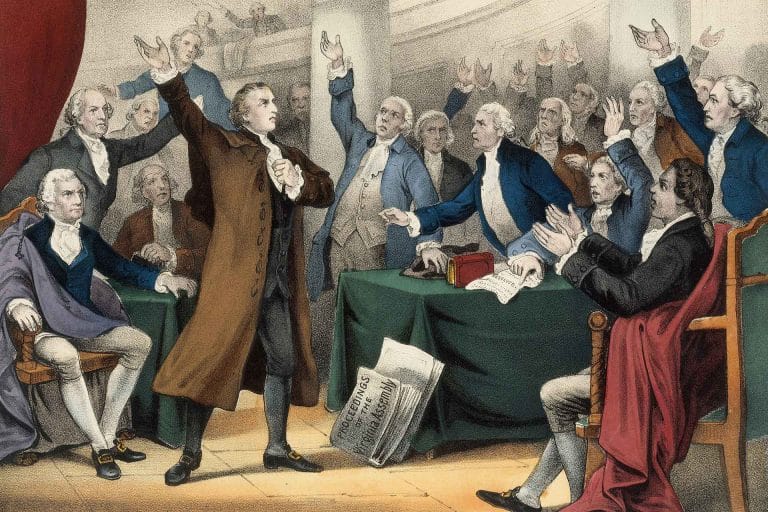
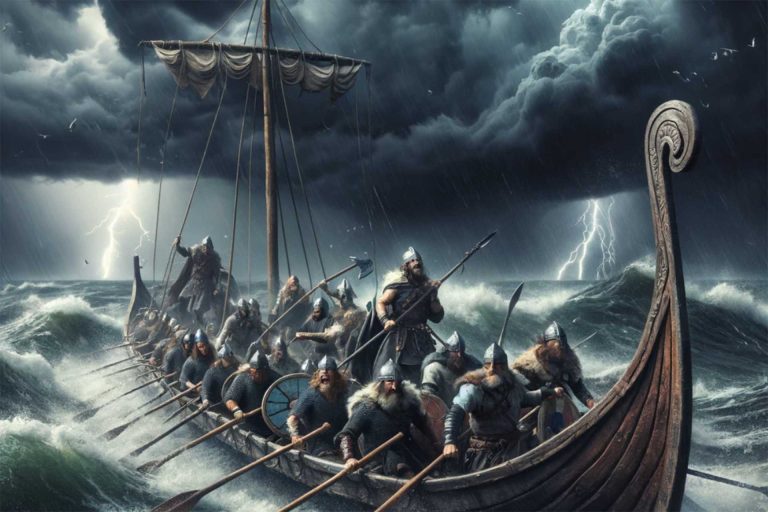
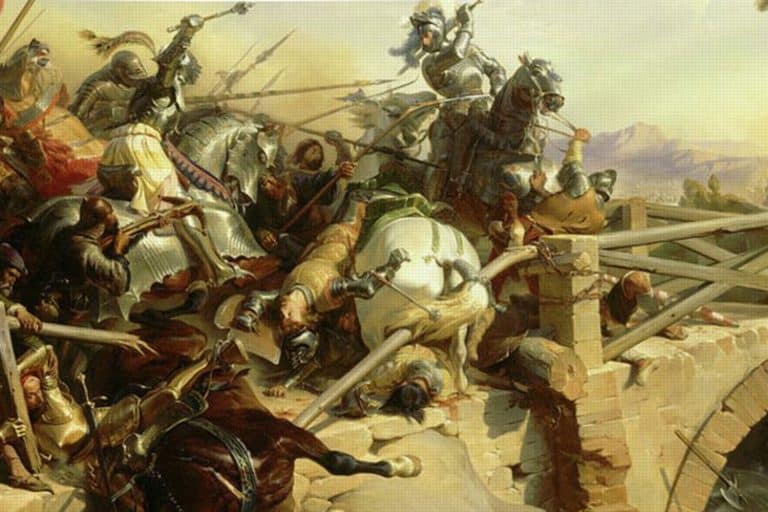
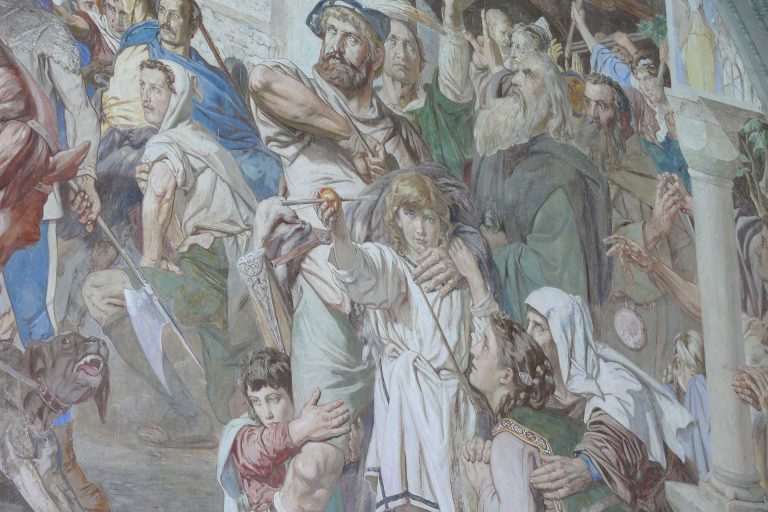

Please be informed that the Order of St. George still exists in the world.
I was invested into the Order in 1922 in New Westminster, BC, and am now a Chevalier in the Prairies Priory of the Grand Priory of Canada.
Our mission statement is to secure, steward and deliver philantrophic funding that will enhance the health, well-being, morale, and quality of life of Veterans, members of the Canadian Armed Forces and their families; and promote leadership, youth development and citizenship training for the Royal Canadian Sea, Army and Air Cadets, and the Junior Canadian Rangers, in collaboration with the Order of St. George, its members and Priories.
Very interesting